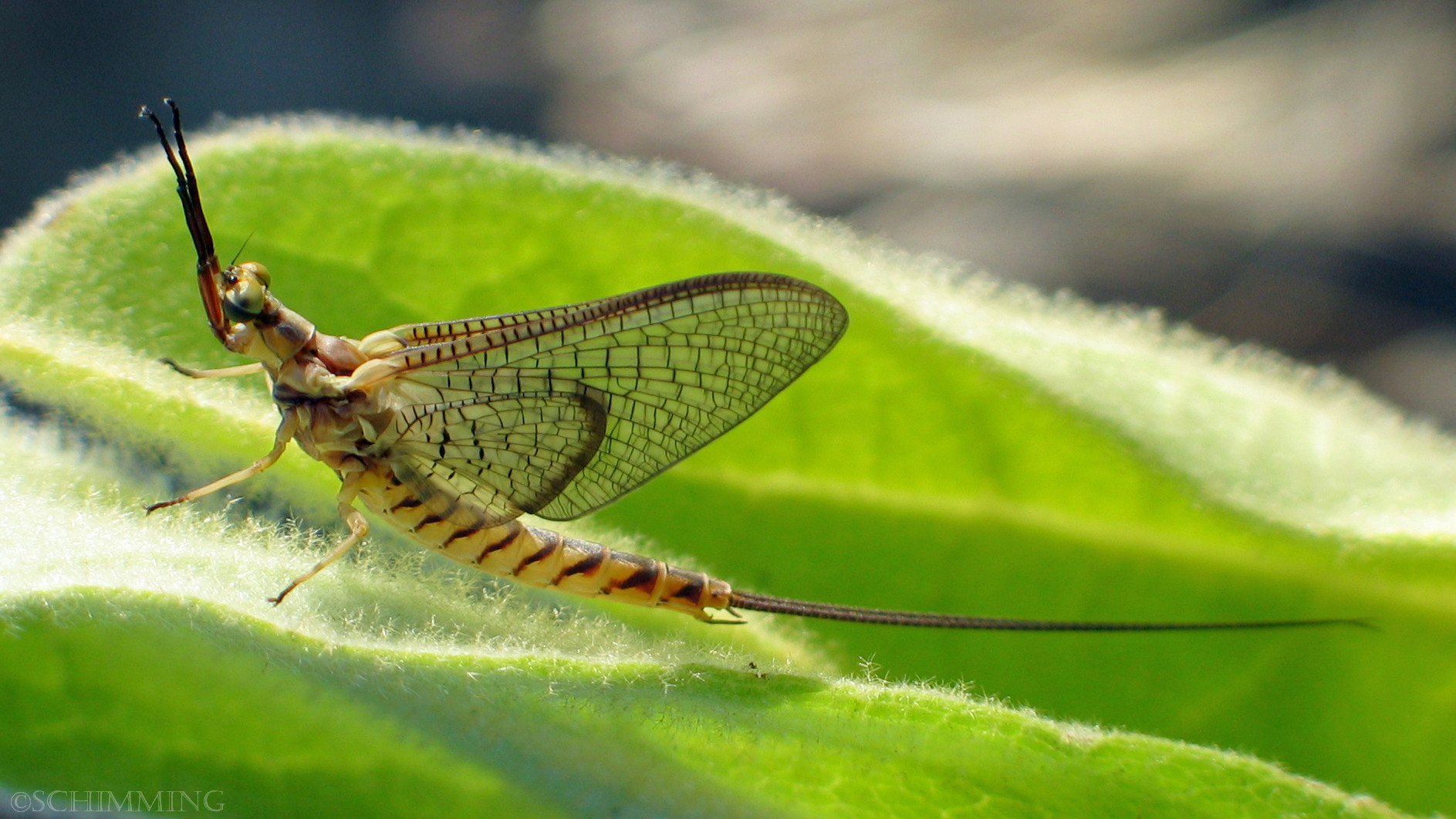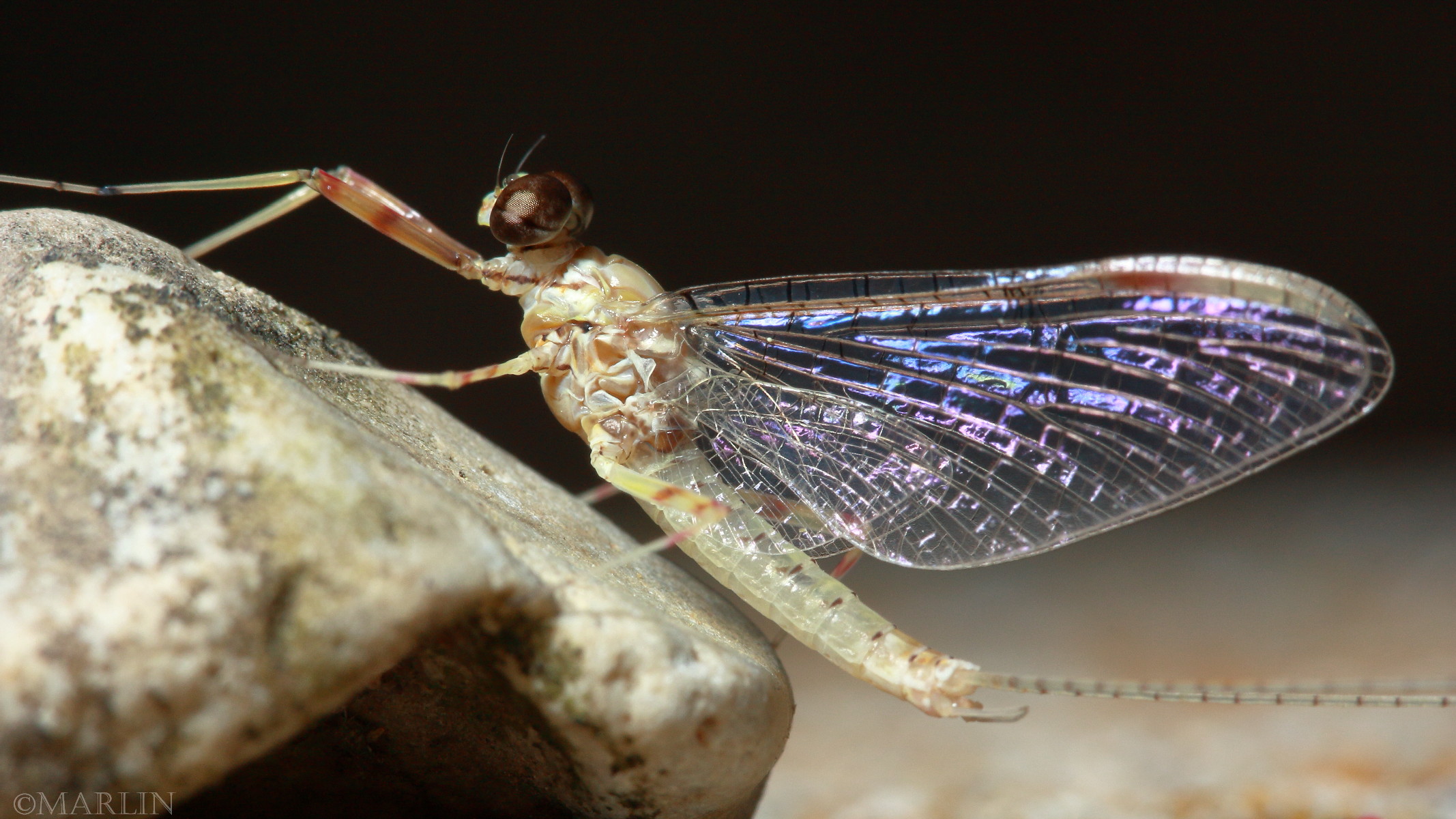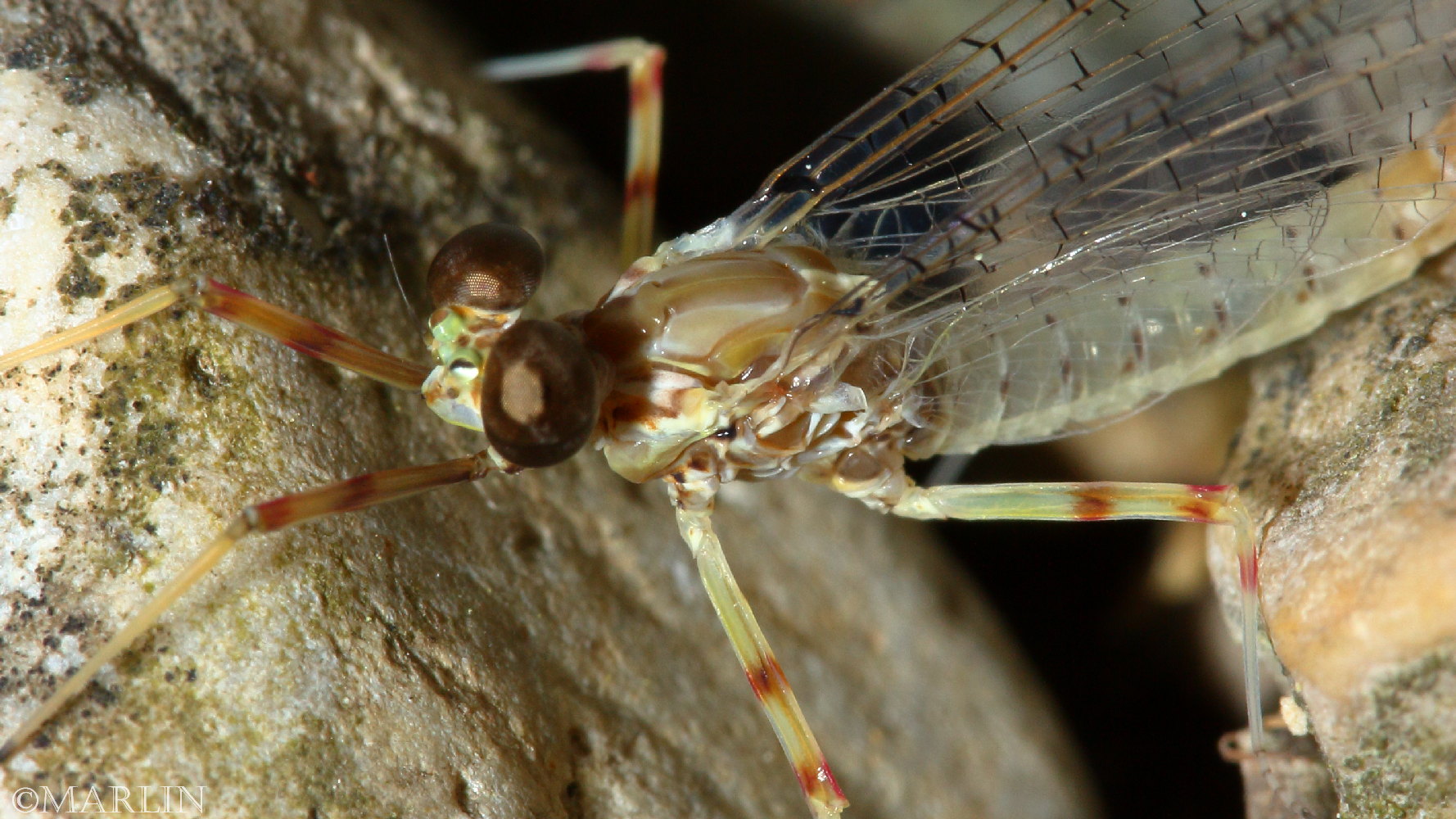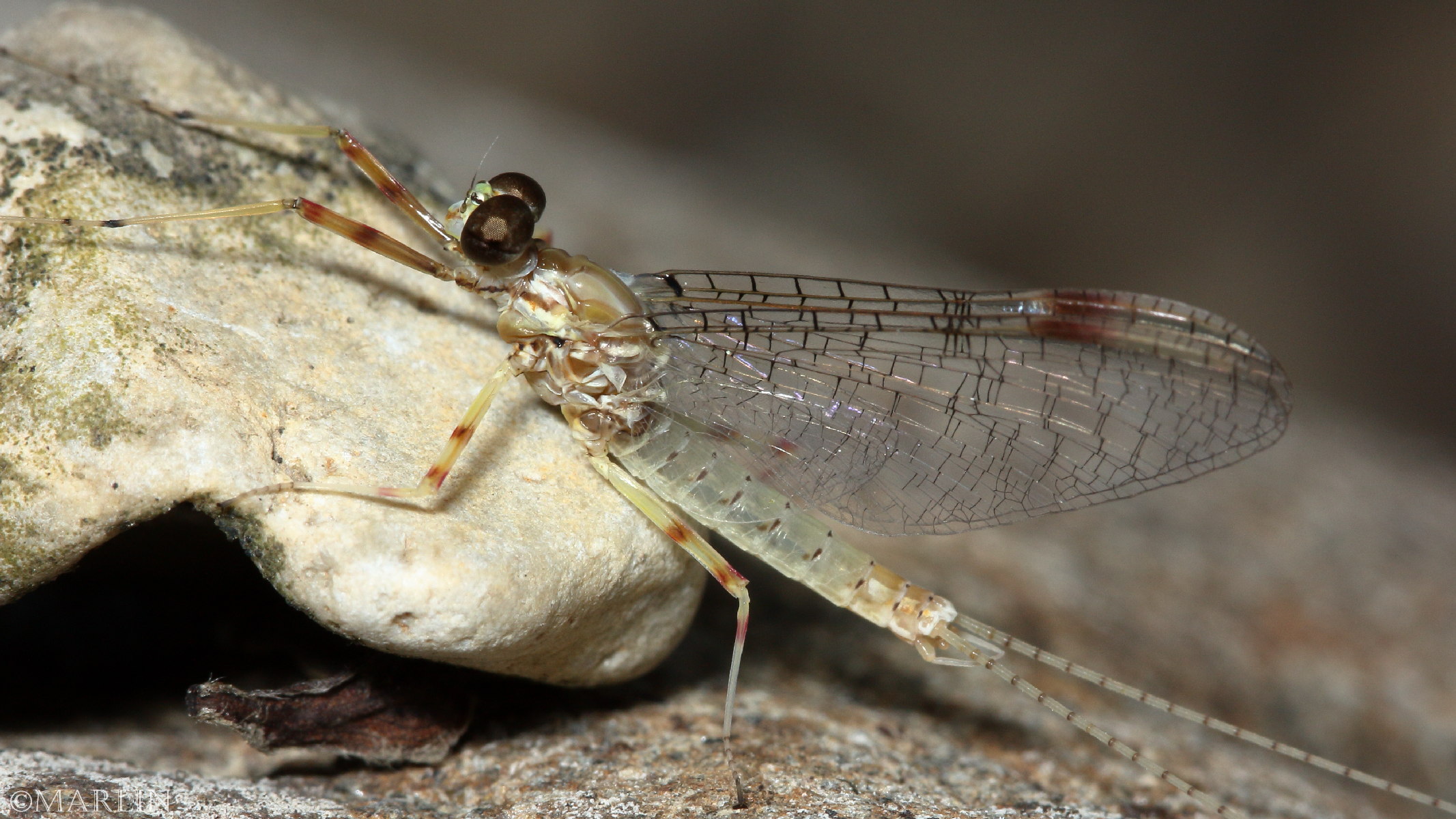Order Ephemeroptera – Mayflies
Adult Mayfly – Hexagenia limbata. Mayflies are the only insects that molt after they have wings. [2]
Ephemeroptera, from Greek Ephemeros – short-lived, pteron – wing, referring to the short life span of adults. As winged adults, they survive only a few hours or at most a few days. They eat nothing, nor do they crawl or walk. They only fly and mate within dancing swarms, usually in late afternoon or evening.
Mayflies constitute one of the most important groups of bottom-dwelling animals in streams and rivers throughout the world. They are also found in ponds and shallow lakes. While the larvae (nymphs) of mayflies live in water, the adults are delicate flying insects. Mayflies are routinely used for monitoring water quality because their presence and diversity can be valuable indicators of the health of their aquatic environment.
Description: Soft bodies with short setaceous (bristle-like) antennae and vestigial mouthparts; wings held vertically at rest, hind pair much reduced; intercalary veins and many crossveins present; abdomen with long cerci, and with or without a medial caudal filament; larvae (nymphs) aquatic, campodeiform (elongated and flattened) with tracheal gills of varied form; true adult preceded by a subimago (winged instar).
Life Cycle: Mating normally occurs the same day adulthood is achieved. Females release as many as 8,000 fertile, oval eggs over the water, often scattering them or, in some species, in mass in a suitable place. After eggs are laid, females fall to the water and float, often drifting onto beaches in nuisance piles or windrows. Others are strongly attracted to and congregate under night lights.
Eggs laid on the water surface gradually sink to the bottom and, after a few days or several months, hatch into tiny aquatic nymphs well adapted for living at the bottom of quiet bodies of water or rapidly flowing streams. Some species burrow into the lake sediment to feed on algae, diatoms, aquatic vegetation, other aquatic insects, etc. When mature, nymphs swim to the surface or climb up plant stems or rocks where they break the nymphal skin, wait briefly for the wings to dry, and fly off. (This subimago period lasts a few minutes to 48 hours, depending on the species.) Subimagos are dull in appearance while true adults are shiny with longer tails and legs.
Mayflies are a vital link in the food web of freshwater ecosystems, making energy stored in algae and other aquatic plants available to higher consumers (other invertebrates, fish, birds, etc.). Any fly fisher can expound on the value of mayflies as food for many gamefish and more specifically as models for fashioning tied flies.” – from Mayflies of North America
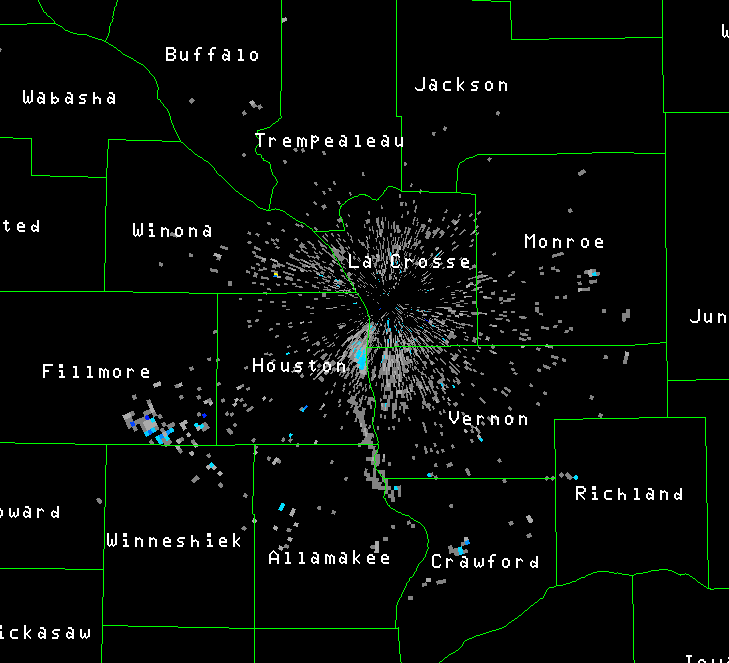 NOAA NWS radar image showing evolving clouds of mayflies on the Mississippi River (July 2006)
NOAA NWS radar image showing evolving clouds of mayflies on the Mississippi River (July 2006)
Lacrosse, Wisconsin – Mayfly Hatches Show Up on Weather Radar
The National Weather Service said it had recorded on its Doppler radar a gigantic cloud of recently hatched mayflies along the Mississippi River near LaCrosse. According to a spokesman, the flies started hatching about 9 p.m. on June 9th and continued overnight along the river valley.
According to the NOAA NWS, “Some roads across the Mississippi in Lacrosse were covered with them, piling into ‘drifts’ on bridges across the river and its tributaries. Local businesses with high intensity lighting found large piles of mayflies accumulating under the lights by midnight.”
Many areas of the country, including Great Lakes Huron and Erie have experienced record-setting mayfly hatches in recent years, said Mike Miller, a stream ecologist with the Wisconsin Department of Natural Resources. The big hatches are probably indicative of improving water quality in the Mississippi and other waters, he said.
A similar event occured along the shores of Lake St. Claire and other waters in Michigan in 2001. Huge swarms of mayflies in the genus Hexagenia were caught on doppler radar. [1]
Fishermen go to great lengths to identify hatch periods, and there are hundreds of different types of both wet and dry artificial flies for dozens of different species, water conditions, adults, nymphs, you name it. The flies have fanciful names such as Blue Wing Olive Hackle Stacker Sparkle Dun, Green Drake Loop Wing Paradun, and my favorite, parachute creampuff.
Spider Index | Spider Main | Orb Weavers | Cobweb | Nursery Web
Tree Encyclopedia / North American Insects & Spiders is dedicated to providing family-friendly educational
resources for our friends around the world through large images and macro photographs of flora and fauna.

